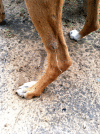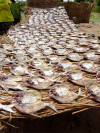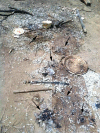The peculiar epidemiology of dracunculiasis in Chad
- PMID: 24277785
- PMCID: PMC3886430
- DOI: 10.4269/ajtmh.13-0554
The peculiar epidemiology of dracunculiasis in Chad
Abstract
Dracunculiasis was rediscovered in Chad in 2010 after an apparent absence of 10 years. In April 2012 active village-based surveillance was initiated to determine where, when, and how transmission of the disease was occurring, and to implement interventions to interrupt it. The current epidemiologic pattern of the disease in Chad is unlike that seen previously in Chad or other endemic countries, i.e., no clustering of cases by village or association with a common water source, the average number of worms per person was small, and a large number of dogs were found to be infected. Molecular sequencing suggests these infections were all caused by Dracunculus medinensis. It appears that the infection in dogs is serving as the major driving force sustaining transmission in Chad, that an aberrant life cycle involving a paratenic host common to people and dogs is occurring, and that the cases in humans are sporadic and incidental.
Figures









References
-
- Muller R. Dracunculus and dracunculiasis. Adv Parasitol. 1971;9:73–151. - PubMed
-
- World Health Organization . WHO/CDS/CEE/DRA/99.9. Geneva: World Health Organization; 1998. Dracunculiasis eradication in Uzbekistan: country report.
-
- Anderson RC. Nematode Parasites of Vertebrates: Their Development and Transmission. Second edition. Wallingford, UK: CABI Publishing; 2000. Chapter 6.2: The Superfamily Dracunculoidea.
Publication types
MeSH terms
Grants and funding
LinkOut - more resources
Full Text Sources
Other Literature Sources
Molecular Biology Databases
Miscellaneous

